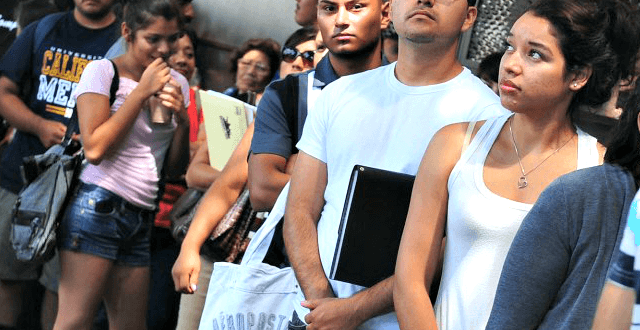What Is Chain Migration?
Published on March 13th, 2023
Intro
As we have chronicled here at CAPS, the United States is in the midst of a record breaking border crisis. While illegal immigration is certainly a massive problem, there’s other immigration issues that negatively affect our country.
Chain migration is an often overlooked component of America’s immigration problem. In this article we will discuss the definition of chain migration, the history of this policy, and how it impacts America’s population woes.
What Is Chain Migration?
Chain migration is the process by which legal immigrants to the United States use their citizenship to bring in multiple members of their non-immediate family. There are some rules and regulations as to which family members can be sponsored, and which ones are prioritized in the immigration process. In effect though, it means that you are never allowing a singular person to enter your country, but theoretically their entire extended family.
Chain migration has a cascading effect on our immigration system. An example would be an immigrant with a wife and two minor children. The husband sponsors his four siblings, and the wife sponsors her four siblings for citizenship. All of the siblings sponsored have spouses and four minor children. That means what was originally a family of four, has now extended out to forty eight additional immigrants.
The History of Chain Migration
The Federation for American Immigration Reform has an insightful article that details the history of chain migration. Our country’s immigration policy was altered with the passage of the Immigration and Nationality Act of 1965 (also known as the Hart-Celler Act). This piece of legislation altered immigration policy in many ways. One change was the focus on keeping families unified, as opposed to prioritizing those who would assimilate easily to the culture of the United States. This is the origin of chain migration into the United States.
As explained by our friends at Numbers USA, chain migration has fueled mass immigration over the last several decades. Their report revealed this is how we have grown 250,000 immigrants per year in the 1950’s, to our current number of over one million per year.
Attempts to curb chain migration have been proposed in recent years. Senators Tom Cotton (R-AK) and David Perdue (R-GA) proposed the RAISE Act back in 2017, which we chronicled here on the CAPS blog. This piece of legislation would have ended chain migration, along with a number of other proposed policies to reduce immigration levels into the United States. The legislation did not pass but has been reintroduced in the Senate on several other occasions.
How Chain Migration Affects America’s Overpopulation Problem
A paper released in 2017 from the Center for Immigration Studies revealed there were 33 million immigrants admitted to the USA between 1981 and 2016. Of that, a majority 20 million were the result of chain migration.
For reference, that’s a bigger population than almost every state except for California, Texas, and Florida. That’s over twice the size of New York City, and over four times the size of Los Angeles.
America needs to prioritize the sustainable use of its resources and the well being of our current population. Stagnant wages, housing, food and water shortages, along with the devastating impact on our environment are only exacerbated by population growth via mass immigration.
We have made this point in the past, but reducing legal immigration is crucial to reducing overall US population growth. Ending chain migration is the simplest way to accomplish that.





